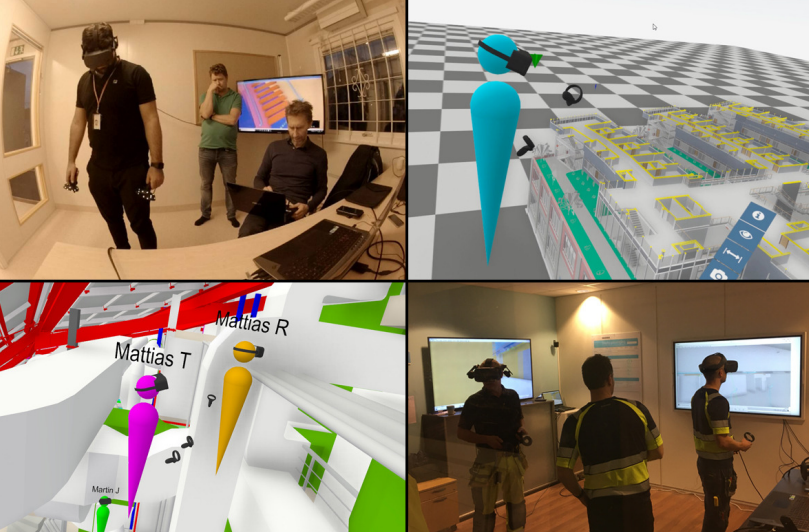
🏗 VR provides better and cheaper construction
VR gives builders and construction management the opportunity to walk around in a full-scale model of a construction and easier to find faults even before construction starts.
Share this story!
Mistakes and miscalculations on a construction site that are discovered when construction is already in full swing can be very expensive.
Now, researchers at the Chalmers University of Technology in Sweden have developed a user-friendly VR interface that can be connected to digital building information models, or BIM models.
It makes it possible to enter a virtual model of the building and see what it will look like in full scale.

"The experiments have shown that the method is very effective when it comes to identifying opportunities for improvement and increasing quality and construction safety. What they have found have been pure design mistakes, but also opportunities to streamline the rules of procedure between disciplines and find alternative solutions that suit the progress better", says Mikael Johansson, research engineer at Chalmers and one of the researchers behind the interface, in a press release.
The possibility of being able to walk around in a full-scale model of the building is something that many of those who have tested the interface have appreciated. It gives a much greater understanding and sense of real proportions, spaces and details compared to seeing a drawing on a computer screen.
In addition, several people can be inside the model at the same time. Construction workers, planners, and staff from the site management and others can thus collaborate directly within the model.
"The experience from the pandemic has accustomed us to working remotely, and the multi-user mode enables participants from design and production to connect and meet within the project, both based on different professional roles and areas of responsibility, but also from widely different places", says Mattias Roupé, another of the researchers behind the interface.
That the interest in the method is great in the industry is shown, among other things, by the fact that the project has recently received the award "innovation of the year" from the Swedish Construction Industry Development Fund SBUF.
By becoming a premium supporter, you help in the creation and sharing of fact-based optimistic news all over the world.


